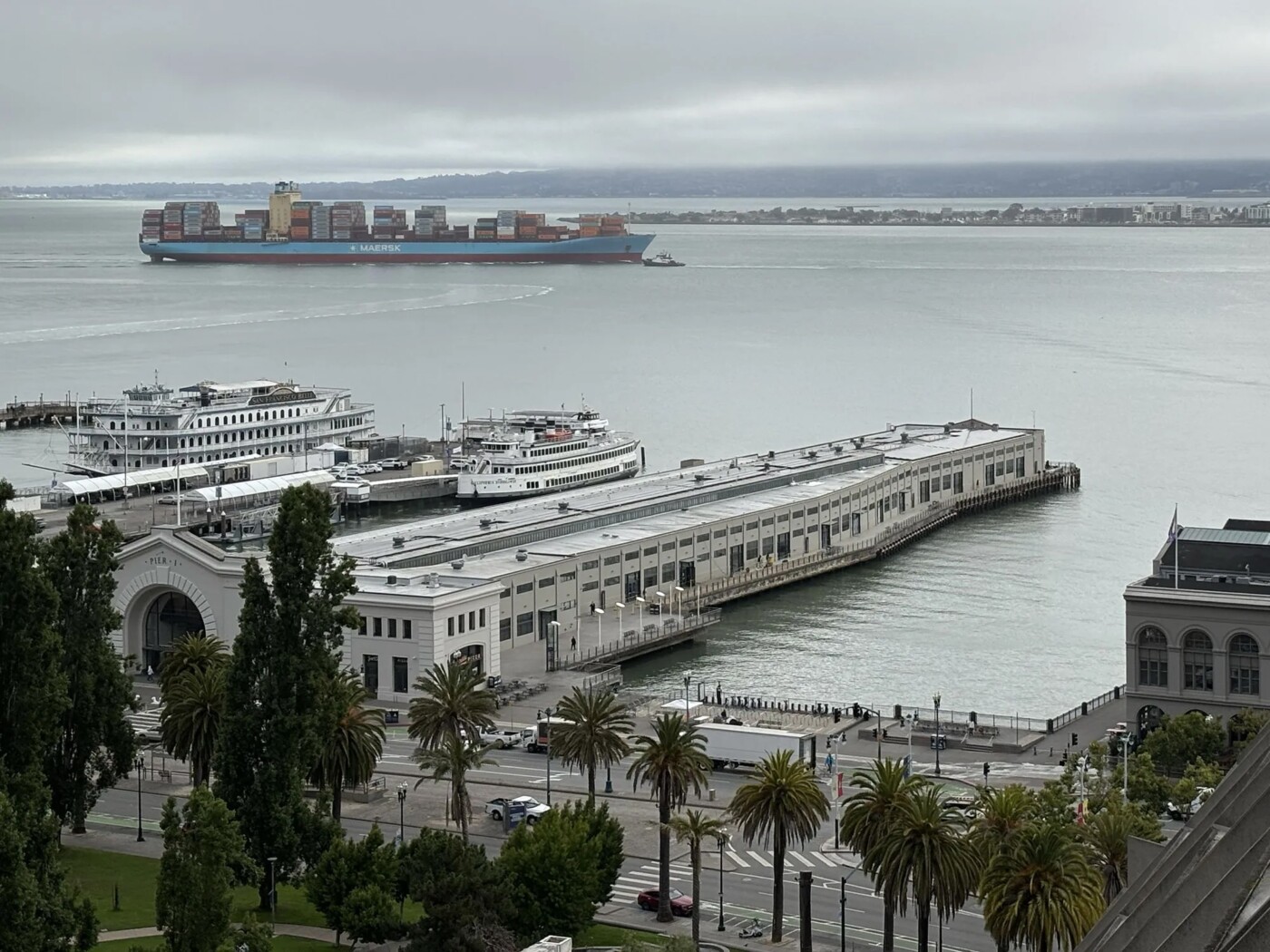Import activity at the Port of Oakland increased by a whopping 31 percent in July as companies rushed to secure inventory ahead of the federal government’s Aug. 1 tariff implementation, port officials announced this week.
July imports jumped from 70,334 20-foot shipping containers arriving in June to 92,392 in July, a 31.4 percent increase and the highest monthly import volume so far this year, port officials said.
Exports also increased by about 10 percent in July, from 59,593 containers in June to 65,595. The port’s total import and export volume was 157,987 containers for the month, up more than 21 percent from June.
“This kind of front-loading — where cargo owners accelerate shipments to avoid added costs — was clearly the driving force behind the month’s performance,” said Port of Oakland maritime director Bryan Brandes.
The Aug. 1 “reciprocal tariffs,” part of President Donald Trump’s ongoing worldwide trade war, included increased import taxes on goods coming in from dozens of countries, including a 50 percent tariff on Indian products.
The robust shipping volumes spurred by worries over tariffs didn’t just happen in Oakland, however, with volumes at the ports of Long Beach and Los Angeles breaking records in July.
In the busiest month of its 117-year history, Los Angeles processed more than 1 million containers in July and Long Beach moved 944,232 through its port, the third-busiest month of its 114-year history and its busiest July ever.
‘Just a short-term bump’
While the booming West Coast trade activity would appear to be good news for local and state economies, some observers are waiting for the other shoe to drop.
“Record container volumes would normally be something to celebrate but all the uncertainty swirling around U.S. trade policy and the impact that import taxes, aka tariffs, are having on businesses and consumers makes it hard to cheer for something that is likely just a short-term bump,” said Rufus Jeffris, spokesperson for the Bay Area Council business group.
The tariffs are widely seen as a cost burden that will eventually be passed on to consumers, increasing the risk of inflation, particularly as the less-expensive goods imported prior to August move through the supply chain.

This year, American consumers face an “average effective tariff rate” of 18.6 percent, the highest since 1933, if import taxes and retaliatory tariffs from other countries stay where they are now, according to an Aug. 7 report from the Budget Lab at Yale, a policy research center at Yale University.
This equates to an average per household income loss of $2,400 for this year, according to the report “State of U.S. Tariffs.”
“The good news is that the surge in purchasing may forestall immediate or dramatic price increases for consumers but the longer elevated tariffs remain in place, the more likely they are to dampen investment and economic growth and fuel inflation,” Jeffris said.
The last time Oakland’s imports were as high as they were in July was in June 2022, when the COVID-19 pandemic sparked a huge demand for imported goods while American consumers enjoyed extra savings and income gains, according to port officials.
More information about Port of Oakland container volume can be found on the port’s website.
The post Port of Oakland container volume surges in July as tariff jitters drive shipping activity appeared first on Local News Matters.
